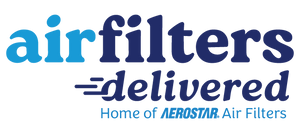
Fireworks on the Fourth of July may seem like a staple of the celebration, but they come with significant health risks. Studies conducted across the United States have shown a sharp decline in air quality during firework displays. Fireworks release fine particulate matter, including harmful heavy metals, which pose serious risks when inhaled. These dangerous air quality levels can persist throughout the morning and afternoon of July 5th.
The issue is exacerbated by a phenomenon called temperature inversion, where cold air traps pollutants like smoke and heavy metal particulates close to the surface, making it easier for us to breathe them in. This stagnant air combined with the lack of wind or sunshine to improve air quality can have detrimental effects.
One way to combat poor air quality is by using MERV 11 or MERV 13 air filters. These advanced air filters are capable of filtering out tiny particles that negatively affect our health.
Cities like New York City, known for relatively good air quality, have experienced alarming pollution levels during July 4th celebrations. In fact, New York City was ranked as the third-most polluted city in the world after the fireworks in 2021. Similar hazardous conditions were observed in Los Angeles, with warnings issued by air quality officials for July 4th and 5th.
Breathing fine particulate matter from fireworks can lead to various cardiovascular and respiratory health issues, including asthma aggravation, decreased lung function, and even premature death for individuals with heart or lung diseases. The American Pyrotechnics Association reported that millions of pounds of fireworks were set off in the United States in 2020, contributing to the pollution in the air we breathe.
Fireworks contain a combination of gunpowder, chemical colorants, metals, paper, and plastics. When they explode, they release gases and fine particulates into the air, resulting in smoke, color, and noise. These substances can settle back to the surface or be transported by the wind to neighboring areas, posing a health risk to residents.
The metals and salts released by fireworks include copper, lead, sulfur, cadmium, aluminum, manganese, arsenic, iron dust, strontium, barium, antimony, benzene, toluene, among others. These pollutants can have severe health implications.
Studies have shown alarming increases in respiratory illness treatments, particles that can be inhaled and accumulate in the lungs or bloodstream, and carbon monoxide levels during fireworks displays. For example, a 1975 study found a 113% increase in respiratory illness treatments during fireworks.
To help ensure clean air in your home, use Aerostar air filters.
To mitigate the risks, local air quality officials and the CDC recommend several measures, such as sitting upwind from the fireworks staging area, maintaining a distance of at least 500 feet, wearing N-95 or N-99 masks, and considering alternative ways to enjoy the show, especially for vulnerable groups like young children, older adults, and those with underlying respiratory illnesses. Monitoring local air quality levels is also advised.
Source: 4th of July fireworks can bring drastic drop in air quality (msn.com)

